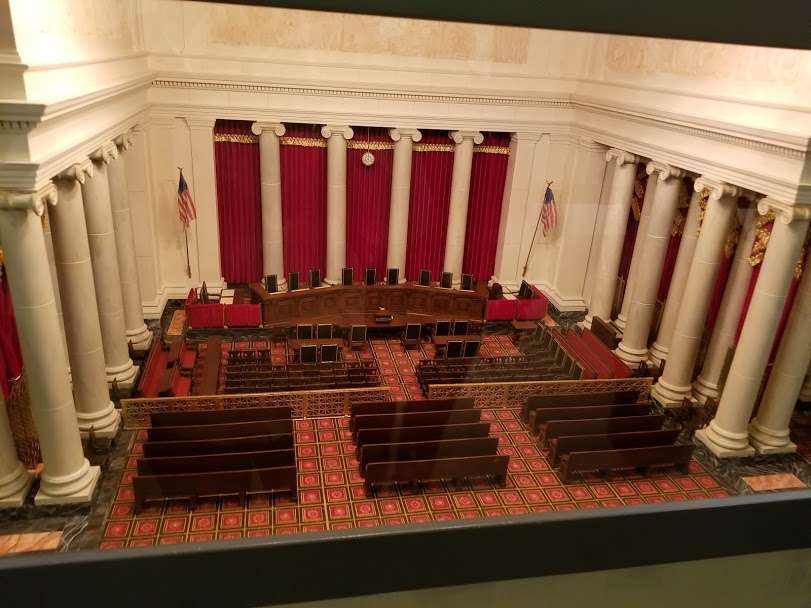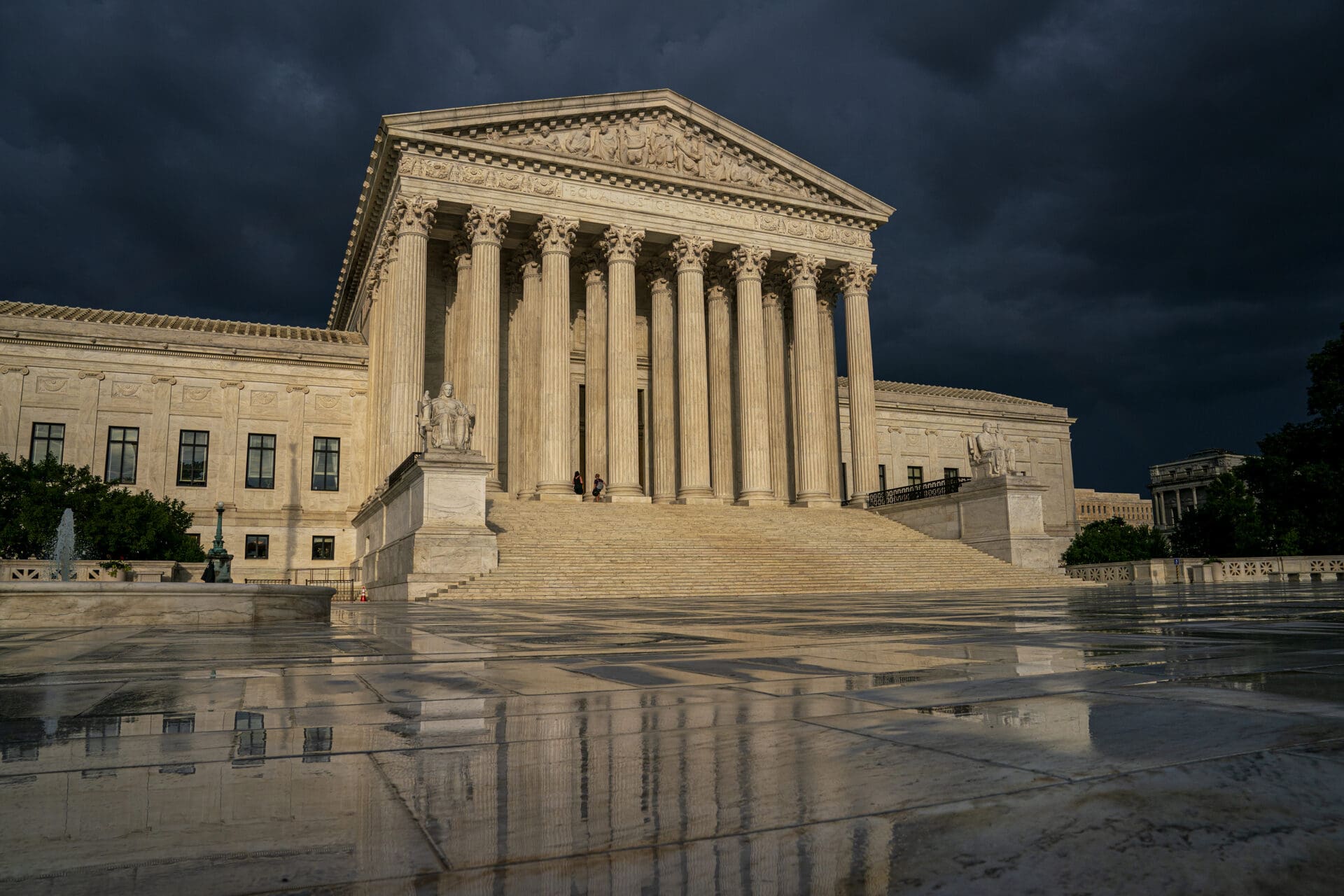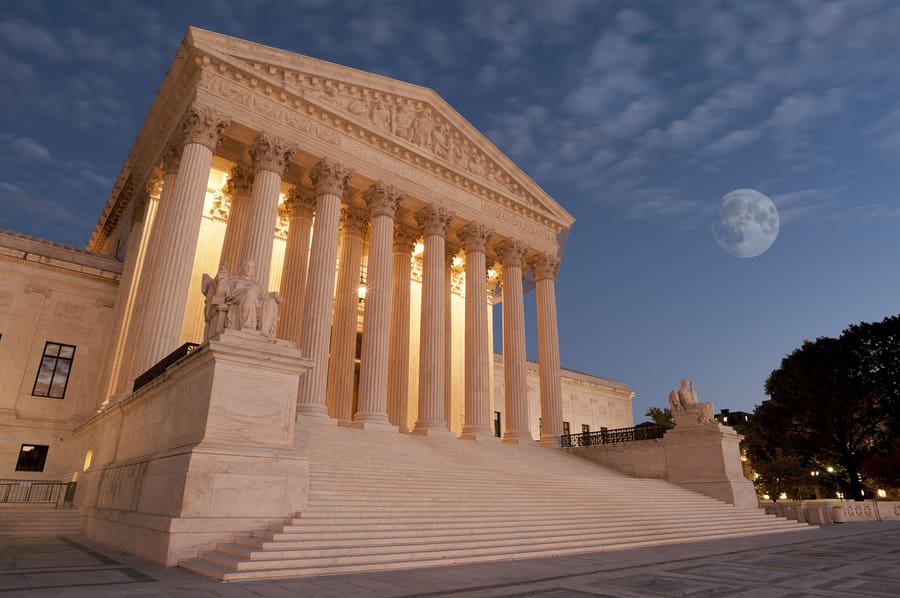[ED: The Supreme Court will hear oral arguments in New York State Rifle & Pistol Assn. v. City of New York on Monday, December 2. TTAG contributors LKB, a member of the Supreme Court bar, and Jeff Hulbert of Patriot Picket, will be there reporting on the arguments, the surrounding protests and other activity.]
By LKB
As TTAG readers know, Monday is zero hour for the long-awaited Supreme Court argument in New York State Rifle & Pistol Assn. v. City of New York. But don’t expect to be able to just tune in and watch it on C-SPAN. For a number of reasons, the Supreme Court has always refused to allow its proceedings to be broadcast or videotaped.
Ergo, if you want to watch a Supreme Court argument, there is only one way: you have to do so in person.
I’m on my way to DC to report on the arguments for TTAG. Here’s is a quick summary of what I’ll have to do to hear the arguments, as well as what you should expect if you ever want to try and attend an argument session at the United States Supreme Court.
The SCOTUS courtroom is ridiculously small:

The benches in the public gallery will seat only about 120 people, and there are about 80 chairs “in front of the bar” for attorneys who are admitted to practice before the Supreme Court. There are also small dedicated seating sections for the press corps, invited guests of the Justices, and the Justices’ law clerks.
So we are starting with a very small number of potential seats in the courtroom to begin with. Then, some of the public gallery and bar members seats are set aside for the parties and attorneys involved in the cases being argued, as well as for attorneys being formally admitted to practice that day (who can each bring one guest).
As a result, there are usually about 50 seats available in the public gallery, and 30-40 (often fewer) in the members section. The Court does not sell tickets or take reservations, so these seats are passed out on a “first come, first served” basis on the day of the argument.
For days with only “routine” cases being argued, the line for these few public gallery seats often forms well before dawn. For high profile cases (e.g., abortion, same sex marriage, DACA, Second Amendment cases, etc.), it often forms days before, with people camping out in a manner reminiscent of concert ticket lines circa 1980.
Making matters worse, the use of paid line-sitters is allowed in the public line. As a result, you have to be very determined (or be willing to hire a line-sitter) if you want to have any chance to get a seat in the public gallery for a high profile case like NYSRPA.
At about 7:00 AM, court personnel come out and give out numbered tickets to the first 50 people or so in the public line. Those people are guaranteed a seat. The next people in line will receive numbered tickets that might get them in if space becomes available.
If you aren’t one of the lucky ones who get a seat, you can still get in the “3 minute line” (a/k/a the Tourist Line) where members of the public can observe the proceedings from a standing room only section in the rear of the courtroom for about 3 minutes at a time before being cycled out for the next group.
If you do get in to watch an argument, don’t expect to take a selfie for the family photo album — no cameras or electronics of any kind are allowed past security, not even smart watches. And, as with any courthouse, don’t even think of bringing your EDC gat or blade.
For attorneys admitted to practice before the Supreme Court, things are a little different. There is a separate “bar line” for the “in front of the bar” seats. On days with “routine” arguments, you might even be able to show up as late as 9:00 AM and still snag a seat in front of the bar for the 10:00 AM arguments.
For high-profile cases, however, the members line often forms in the wee hours of the morning. Using paid line-sitters in the members line is prohibited. If you want to watch the arguments from in front of the bar, you’re supposed to stand in the line yourself.
Additionally, you must be “dressed for court,” which means for a high-profile case you’re likely going to be standing in line outside for hours (often in inclement weather) in a suit and tie.
When the courthouse doors open (usually about 8:30 AM), being in the “members line” means the people in it can then enter the courthouse, clear security, and get in another line that forms inside where court personnel confirm that you are on the roster of admitted attorneys, and then they issue numbered tickets for however many seats are available.
As some legal commentators have pointed out this haphazard system for the members line is ripe for all kinds of cheating and abuse on days when there are high-profile arguments.
However, all is not lost if you are a member who doesn’t get a seat. Members of the Supreme Court bar are allowed to sit in the Lawyers’ Lounge (which seats about 100) and listen to a live audio feed of the arguments. It’s not an ideal consolation prize (especially if you’ve been standing out in the cold for hours), but at least you’ll get to hear the arguments as they happen.
Currently, the DC area forecast for early tomorrow morning is for rain and temps in the high 30’s. I brought my folding camp stool (which fits into my trial bag), rain pants that fit over my suit, knee-length goose down topcoat with a hood, gloves, wool hat, chemical glove and boot warmers, etc.
I’m treating it like I’ll be heading out to a winter deer blind before dawn (only without a weapon, and wearing a suit and tie under all that outerwear).
Will I get a ringside seat in the Courtroom, or will I have to settle for listening to the live feed? Watch this space tomorrow.





My prayers are with you. When you camp out for enough concerts and the like, sooner or later you will get lucky. I have been able to get in the first 5 rows many times, It just takes persistance and the ability to buy breakfast and pay others to wait with you.
“When you camp out for enough concerts and the like, sooner or later you will get lucky. I have been able to get in the first 5 rows many times,…”
That’s not always a good thing.
Had 4th row seats for the Rolling Stones during their ‘Steel Wheels’ tour in the late 80s.
Big. Mistake. The only time we saw Jagger and the boys was when they came right up to the edge of the stage. Lesson learned : The best seats for concerts are most often up in the stadium part off to the side, not on the ‘field’. Being able to sit down was a major improvement in concert watching comfort.
Fortunately, I learned early in my concert-attending career that ringing ears after the show sucked, so I started wearing foam earplugs. What a difference, no pain, and I could hear the concert a whole lot better with them in…
I really appreciate the detail you’ve provided on what it takes to be in the audience of the SC. Thanks for the info and thanks for arranging it in the rain on a cold night.
Yep, I found that not only very informative but interesting, as well.
Just stay home & watch TV, you won’t miss a thing, plus all the boring stuff you really don’t care about. It’s like NASCAR, the only reason people watch it is to see some dummy take a right. All the good stuff will be up front & center on the (not fake) news.
Thanks for doing this.
Thank you for explaining this. I hope to sit in and hear a SCOTUS case before I die, and now I’m much better informed as to what I need to do to make that happen.
Update:
Got to SCOTUS at 3:40AM, and I am #1 in the bar line! Attorneys for Brady Center, Shannon Watts’ Group, and the Maryland AG’s office are right behind me.
Cold but not raining got now.
LKB
Nice.
Wish DC was not so far from Texas. I would be there.
Awesome! Can’t wait to hear your after-action report.
Early reports from admittedly liberal leaning news sources are saying that, based on his questioning, Roberts is likely to side with the liberal justices and find the case is moot.
Roberts asked two questions on mootness. Neither indicated to me that he was sympathetic to that position; indeed, one cut fairly strongly the other way.
I just read the transcript of the oral argument and agree with your assessment.
The attorney for the SG didn’t do Petitioners many favors on the issue of mootness.
Comments are closed.